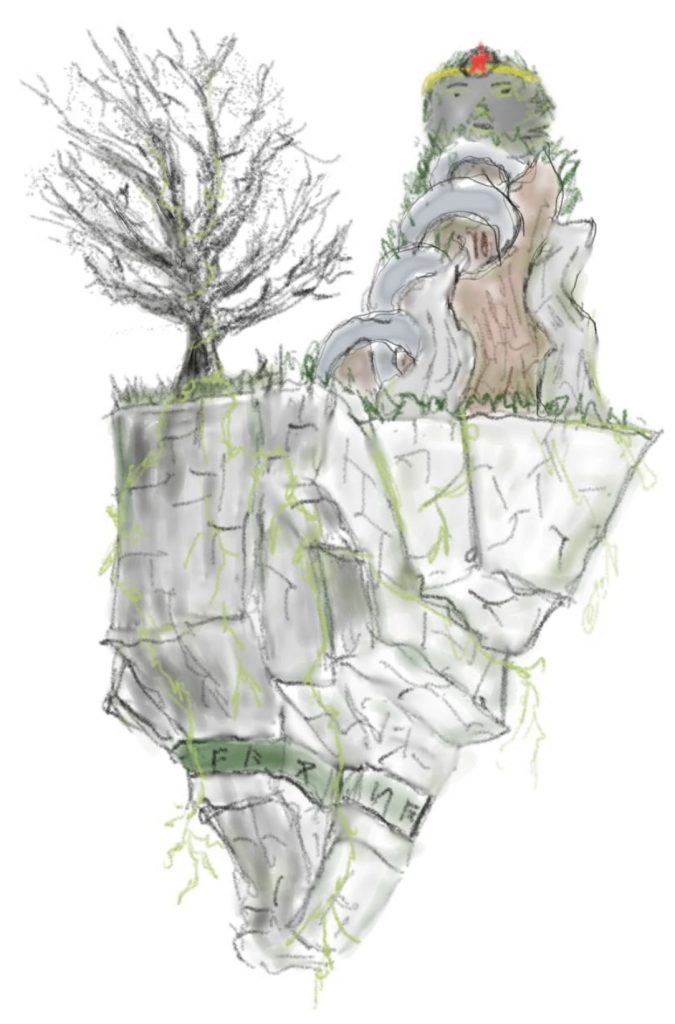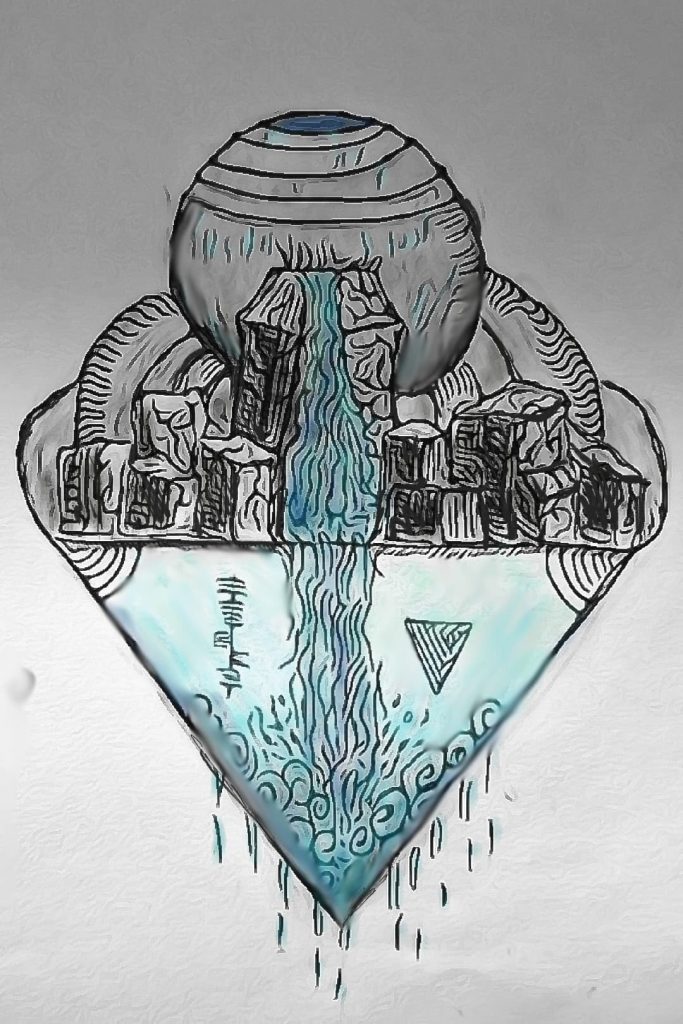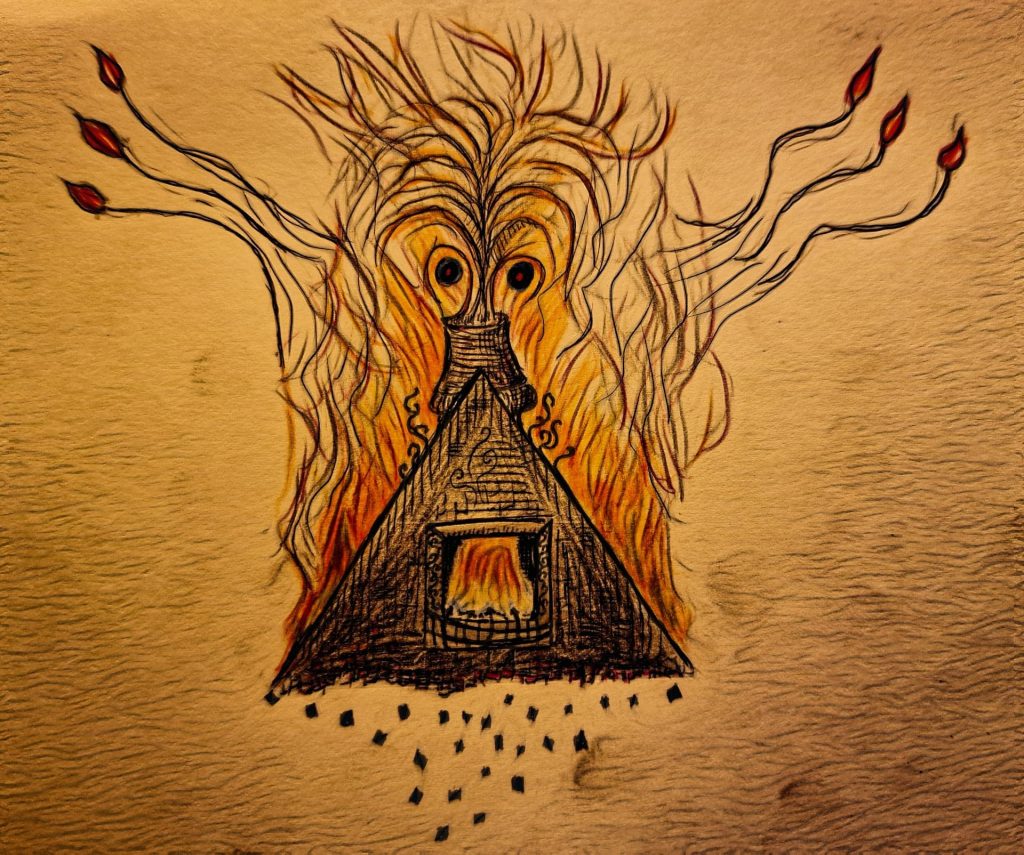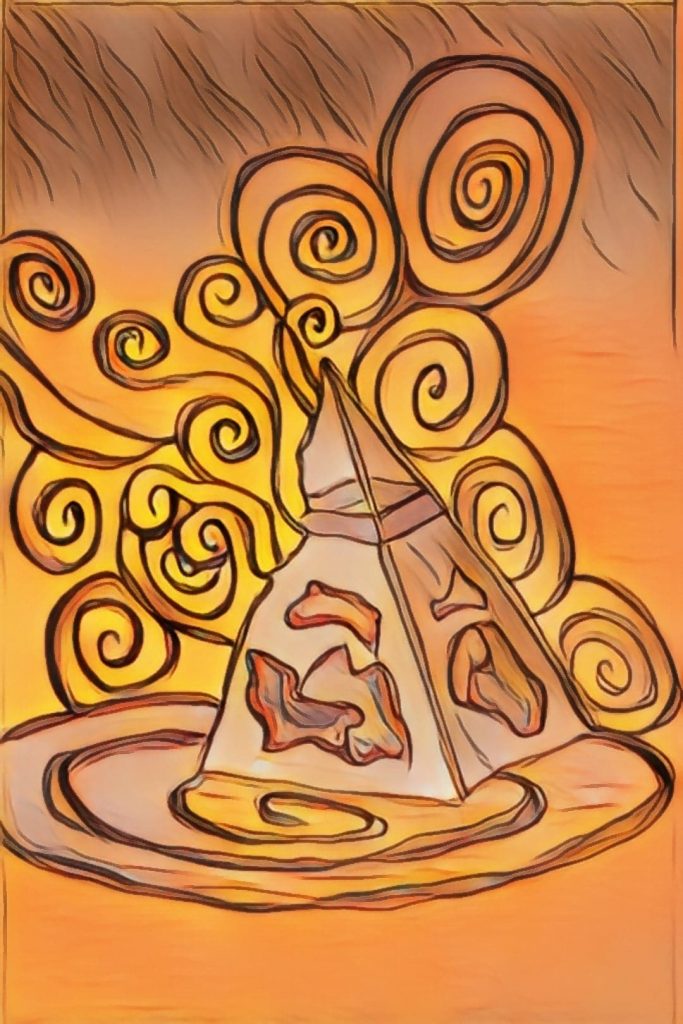This essay pays homage to the elements. Not the one hundred and eighteen chemical elements in the periodic table, but the four classical elements – earth, air, fire and water.
It doesn’t feel like a coincidence that various ancient cultures happened on the same four elements as being important. There’s an intuitive rightness to this selection in the way they seem to link different areas of thought and experience. The four elements are related to the human need for warmth (fire), materials (earth) and sustenance (air and water). They correspond to the four phases of matter (solid, liquid, gas and plasma) and are seen as precursors of our modern understanding of chemistry. They also find resonance outside of a scientific worldview and have been incorporated in the psychology of Jung as well as a variety of mystical traditions.
Despite all this, the elements are seen mostly as an historical curiosity and not especially relevant to us now. My purpose is to invigorate interest in the elements by looking at them afresh. I want to do this by exploring them for what they are and what they mean to us. I don’t want to lose scientific, metaphorical or mystical interpretations, but I always want to come back to the elements as phenomena in their own right.
In this regard, there are three attributes come to mind when I think about the elements.
The first is that they are part of our experience. Sometimes overwhelmingly so. They contribute to our comfort or discomfort. They can make us messy (think of soot from a fire or mud following rain) or help us to be clean (bathing in water). They can be a source of both safety or danger (the warmth of a fire, the anger of a storm) and are something that we might seek out or seek to avoid.
The second is that they interact with each other. Whilst being distinct, there is a sense of connection between them. Water extinguishes fire. Air will intensify flames. Fire contributes its ashes to the earth. Water added to earth will bring forth life.
And that’s the third attribute, hinted at all along. The way each of them is not merely an inanimate force or substance, but also stands in complex relationships to living systems.
Let’s consider the elements from this holistic perspective.
Earth

“Praised be You my Lord through our Sister,
Mother Earth
who sustains and governs us,
producing varied fruits with colored flowers and herbs.”
St. Francis of Assisi
Earth. A word in English that can mean both the planet and the soil. The planet – the place where we live – but more than that – a place rendered habitable by the eternal work of living systems. The soil – a primary nurturer of growth. A substance whose structure and complexity is only just being understood. A matrix of organic and inorganic materials – both life and the nutrient broth that life needs. A place where colonies of bacteria and fungi occupy micro-canyons between pieces of grit and wage warfare on each other. They fight tumultuous, eternal, but self-limiting battles by which an even patchwork of territories is maintained. Earth as soil is a microcosm of Earth as planet.
While having a carbon base, our bodies are flecked with with minerals leached from the earth. These are held in a molecular harness which activate their special powers. The iron in our blood carries oxygen to all our tissues Zinc helps to hold our DNA together. Magnesium works the contractions of our muscles. The minerals of the earth confer specific capabilities that enable the various operations of life. The roots of plants penetrating the soil sift for these minerals and concentrate them in a subtle mining operation that leaves no scar or pithead gear. And we enjoy planting our feet in the cool earth as if to draw strength from its quiet potency.
Water

“Praised be You my Lord through Sister Water,
So useful, humble, precious and pure.”
St. Francis of Assisi
Water is commonly used as a metaphor for life. In Christianity the ‘water of life’ is taken to represent the holy spirit. But we can assume a more literal meaning of that phrase. Water = Life. Life = Water. Oceans are life’s likely birthplace. Water is a common shared requirement of all life on the planet. Water exists chemically and structurally inside every living thing, and outside as a medium for living things to live in. Have you ever examined a drop of pond water under a microscope and seen the myriad forms of life it contains? Paramecium barreling along with urgency. Algal cells stuffed with chloroplasts stacked like pallets. Whiskered copepods – symmetrical crustaceans with hard shells that are so thin they showcase its inner organs. Pond water is almost the most miraculous thing there can be – a microcosm of the profundity of the living world in a drop of water. And those drops coalesce into rivulets, streams, tributaries, rivers. The capillaries and vessels of the land. Draining its fluid. Maintaining a healthy balance. For me, water is the element I feel closest too. The cymbal crash of a solitary breaking wave. The implacable flow of a river in spate, all silt laden and earthy brown. The splendor of a waterfall. The misery of rain without shelter.
Fire

“Praised be You my Lord through Brother Fire,
through whom You light the night and he is beautiful and playful and robust and strong.”
St. Francis of Assisi
A manifestation of energy and transformation, fire is the element which flickers most easily between assistance and destruction. Warmth. Cooked food. The sun powering life on earth. The fire within us – those metabolic processes by which aerobic organisms burn carbon without a flame. Dancing flames capture our attention as if they are the raw materials of the imagination. Flames that warm, consume, purify. Out of control they terrify. Consumption by fire is often part of a cycle, one that life has adapted to – individually but also as a system. The soft spongy bark of the giant redwood is fireproof as if these safety conscious giants had the foresight to wrap themselves in fire blankets. Where trees and undergrowth are burned, this creates room for new growth. The practices of humans become embroiled within these systems. Indigenous Australians set fire to the land in a controlled way. By encouraging renewal they increased the variety of plants that flourished. In this way they slanted the tendencies of nature in their favour as if diverting a stream to fill a crystal clear pool. After this management, when a lightning strike ignites the brush, the paucity of fuel prevents a ferocious fire. The danger is forestalled. The flame neutered. This has often been the story of the relationship between life and the elements. Life weaves the elements into systems, always harnessing, attenuating. Life becomes the hand holding the leash of the tiger.
Air

“Praised be You, my Lord, through Brothers Wind and Air,
And fair and stormy, all weather’s moods,
by which You cherish all that You have made.”
St. Francis of Assisi
More than all the other elements air is the most immediately necessary for our continued life. We continually breathe in its heady mix of nitrogen and oxygen, adding in carbon dioxide as we exhale. These gasses are carefully regulated into virtuous proportions by living systems. Plenty of nitrogen to dampen the reactive oxygen. Trace amounts of carbon dioxide to hold an even planetary temperature. The atmosphere is itself a dynamic reservior of circulating gasses – one that mediates the paired breathing between plants and animals. Air is the most pervasive element as it evenly fills every open space, penetrating water and earth and feeding fire. When still, air is barely noticible. Animated it becomes a breeze that scatters pollen and seed – intimately engaging with the promulgation of life. Or a storm that tests the strength of trees, felling those found wanting. Like its sibling fire, air fosters renewal by unseating the logjam of stately elders that would otherwise claim the canopy indefinitely. At the same time it is the nebulous substance that gives lift to wings to carry birds and airplanes. It is the medium of sound. On a windy day it is exhilaration. It is the breath of the planet, the way that it speaks to us.
Feel the breath of the trees on your face
Play with fire
Carry a handful of earth in your pocket
Stick out your tongue and taste the rain
The individual images of Earth, Fire, Air and Water are by Samuel Hartswood.
The banner image depicts the alchemical symbols representing the four classical elements.
